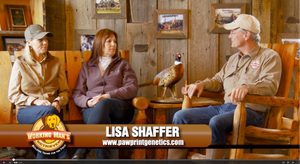In recognition of the AKC’s Responsible Dog Ownership Days, I thought I’d reflect on what it means to be a responsible dog owner, as it’s a very subjective topic.
Some people believe simply providing food, water and shelter is the only responsibility of owning a dog. I’d say that’s the bottom line, lowest common denominator of responsible dog ownership. Below are some thoughts on what it means to responsibly care for, train and breed dogs. Which do you think are most important?
The Basics: As said, providing your dog with quality diet, water and shelter from heat/cold/precipitation are the bare minimums of responsibility. I’d add sufficient exercise and interaction to that list as well.
Socialization: Raising a puppy that has had proper socialization during the first 12 weeks of age will make a difference in its character and psychological stability for the rest of its life. Safely introducing your puppy and allowing it to meet and interact with other dogs teaches it how to behave around other dogs, and what the proper protocols and canine rituals are. Failure to socialize your dog can handicap it; creating a fearful or aggressive dog that will have difficulty interacting with other ...









